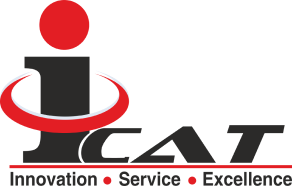The iCAT Certification Process is an essential pathway that ensures the safety, security, and quality of products, particularly in the field of technology and electronic devices. iCAT (International Certification of Advanced Technologies) is a certification body that evaluates and certifies products, systems, and services against industry standards. Achieving iCAT certification signifies that a product has met stringent requirements set by industry experts and regulatory bodies.
In this article, we will explore the iCAT certification process, its significance, and how it benefits organizations and consumers alike. By the end of this content, readers will have a clear understanding of what iCAT certification entails, why it is important, and how companies can go about obtaining it.
1. What is iCAT Certification?
The iCAT Certification is a formal recognition that a product, service, or system has been tested and meets specific quality and safety standards. The certification is often sought by companies in the electronics, telecommunications, automotive, and IT sectors. iCAT certification ensures that products are reliable, safe, and compliant with the necessary regulatory standards.
The certification process involves comprehensive testing, auditing, and review of the product’s design, functionality, and performance. These steps help identify any potential risks or non-compliance issues early in the development stage, ultimately preventing costly failures or safety hazards once the product is released to the market.
2. Importance of iCAT Certification
iCAT certification is highly regarded because it helps build trust and credibility in the marketplace. For manufacturers and service providers, having iCAT-certified products allows them to:
- Gain Competitive Advantage: Certification sets their products apart from competitors by showcasing their adherence to global standards.
- Increase Customer Confidence: Consumers are more likely to purchase products from brands they trust. iCAT certification can enhance brand reputation and customer loyalty.
- Access Global Markets: Many countries and regions require compliance with specific standards before products are allowed entry into their markets. iCAT certification can help organizations meet these regulatory requirements.
- Improve Product Quality: The rigorous testing and review process required for certification helps identify areas for improvement, leading to higher-quality products.
For consumers, iCAT-certified products offer the reassurance that the products they are purchasing are safe, durable, and compliant with the latest industry regulations.
3. Steps in the iCAT Certification Process
The iCAT certification process involves multiple stages that ensure the product meets the necessary standards and requirements. Below are the key steps in the process:
3.1. Application and Documentation Submission
The first step is for the manufacturer or service provider to submit an application for iCAT certification. Along with the application, the organization must provide detailed documentation about the product, including:
- Product design and specifications
- Manufacturing processes
- Quality assurance protocols
- Any previous testing or compliance reports
This documentation helps iCAT certification authorities assess the product’s potential compliance with established standards.
3.2. Preliminary Review
Once the application and documentation are submitted, a preliminary review is conducted by iCAT experts. This review involves examining the product’s technical details, manufacturing processes, and other relevant information to ensure that the product aligns with iCAT’s basic criteria for certification.
3.3. Product Testing and Evaluation
After the initial review, the product undergoes rigorous testing to verify its compliance with safety, performance, and quality standards. The testing phase is one of the most critical steps in the certification process, as it identifies any potential flaws or risks associated with the product.
Tests may include:
- Safety Tests: Ensuring the product does not pose a safety hazard to consumers.
- Performance Tests: Verifying that the product functions as intended under various conditions.
- Environmental Impact Assessments: Ensuring the product complies with environmental sustainability regulations.
- Security Tests: Particularly important for electronic devices and IT systems, these tests evaluate the product’s resistance to cyber threats and vulnerabilities.
These tests are conducted by certified third-party laboratories and experts who have experience with the specific product category.
3.4. Certification Audit
Once the testing phase is complete, an audit is performed to verify the integrity of the product’s manufacturing process, quality control systems, and compliance with regulatory standards. The audit may involve site inspections, interviews with personnel, and an examination of the company’s processes.
3.5. Review and Certification Decision
Following the audit, the results are reviewed by an iCAT panel of experts. Based on the test results, audits, and overall compliance, a decision is made regarding the certification of the product.
- If the product meets all required standards, iCAT certification is granted.
- If there are any discrepancies or issues, the manufacturer is provided with feedback on necessary improvements. The company may then re-submit the product after addressing the issues.
3.6. Issuance of iCAT Certification
Once the product passes all necessary assessments, the manufacturer is issued the iCAT certification. The product is now deemed to be compliant with all relevant industry standards, and the manufacturer is authorized to display the iCAT certification logo on their product packaging and promotional materials.
3.7. Post-Certification Surveillance
iCAT certification is not a one-time process. To maintain the certification, companies must undergo regular surveillance audits. These audits ensure that the product continues to meet the necessary standards over time. Additionally, manufacturers must inform iCAT of any changes to the product design or production process that could affect compliance.
4. Challenges in the iCAT Certification Process
While the iCAT certification process is thorough and comprehensive, it can pose challenges for organizations. Some of the most common challenges include:
- Cost: The certification process can be expensive, especially for smaller companies. Testing, documentation, and audits require significant financial investment.
- Time: The certification process can take several months to complete. Manufacturers may experience delays in bringing their products to market.
- Complexity: Navigating the various industry standards and regulations can be complex, especially for companies that are unfamiliar with the certification process.
Despite these challenges, the long-term benefits of obtaining iCAT certification far outweigh the costs and time invested.
5. Conclusion
The iCAT certification process is a comprehensive, multi-step pathway that ensures the quality, safety, and compliance of products and services. By obtaining iCAT certification, manufacturers can demonstrate their commitment to excellence and gain a competitive edge in the marketplace. The certification not only improves product reliability but also boosts consumer confidence and supports global market access. Though the process can be time-consuming and costly, the benefits it provides in terms of reputation, trust, and product quality make it a valuable investment for companies striving for success in today’s competitive environment.
For consumers, iCAT-certified products offer peace of mind, knowing that they are using safe, secure, and high-quality items that meet the highest industry standards. As the demand for quality and safety continues to rise, iCAT certification will remain an important benchmark for product excellence.

